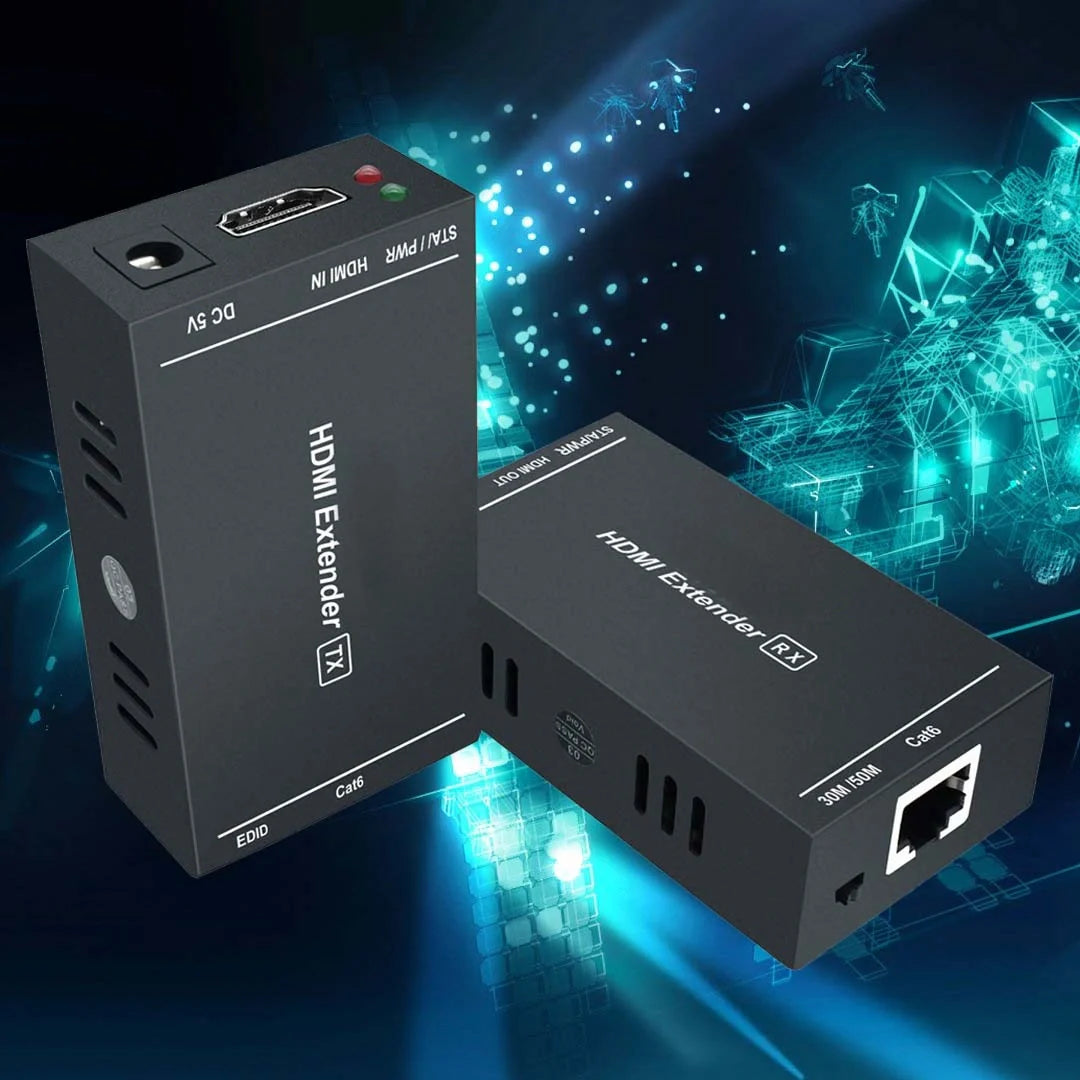You have no items in your shopping cart.

In the realm of modern technology, where high-definition content reigns supreme, the HDMI interface stands as an indispensable link between our devices and displays. Whether it's transmitting crisp video or immersive audio, HDMI has become the gold standard for seamless digital connectivity. However, what happens when the distance between your source device and display exceeds the limitations of a standard HDMI cable? This is where the HDMI extender steps in, extending the reach of HDMI signals to bridge the gap and unlock new possibilities in home entertainment, business presentations, and beyond.
An extender is a device designed to overcome the inherent distance limitations of the cables by transmitting signals over longer distances without degradation. It essentially acts as a bridge, enabling signals to traverse extended distances beyond the typical cable length restrictions. This opens up a plethora of applications, from distributing AV content in large venues to connecting devices in remote locations within a home or office setup.
At its core, a cable extender consists of two main components: a transmitter and a receiver. The transmitter connects to the HDMI source device, such as a Blu-ray player, gaming console, or computer, while the receiver connects to the display, such as a TV, monitor, or projector. These two components work in tandem to extend the HDMI signal over greater distances.
The transmitter converts the signal into a format that can be transmitted over long distances, typically using technologies like HDBaseT or IP (Internet Protocol). Once the signal reaches the receiver, it is converted back into HDMI format, ensuring seamless compatibility with the display device. Some extenders also support additional features like bi-directional IR (infrared) control, allowing users to remotely control their source devices from the display location.
The extenders come in various forms to suit different applications and environments. The two primary types of HDMI extenders are:
HDBaseT Extenders: HDBaseT technology allows for the transmission of uncompressed high-definition video, audio, power, Ethernet, and control signals over a single Cat5e/6/7 cable, making it ideal for installations where long-distance transmission is required. HDBaseT extenders can transmit the signals over distances of up to 100 meters (328 feet) or more, depending on the model and cable quality.
IP Extenders: IP-based HDMI extenders leverage existing network infrastructure to transmit signals over long distances. These extenders encode HDMI signals into IP packets, which are then transmitted over Ethernet cables or wireless networks to the receiving end, where they are decoded back into HDMI format. IP extenders offer flexibility and scalability, allowing for virtually unlimited extension distances depending on the network setup.
The versatility of the extenders opens up a wide range of applications across various industries and environments. Some common applications include:
Home Theater: In home theater setups where the source devices are located in a different room from the display, the extenders enable seamless transmission of high-definition audio and video signals without compromising quality.
Commercial AV: In commercial settings such as conference rooms, classrooms, and digital signage installations, the extenders facilitate the distribution of multimedia content to multiple displays over long distances, ensuring engaging presentations and immersive experiences.
Retail: In retail environments, the extenders can be used to create dynamic digital signage displays that showcase product information, promotions, and advertisements across large store layouts.
Healthcare: In healthcare facilities, the extenders enable the distribution of medical imaging and patient information to various displays throughout the facility, improving communication and collaboration among healthcare professionals.
Gaming: For gaming enthusiasts who want to set up gaming stations in different rooms or locations, the extenders provide the flexibility to connect gaming consoles to multiple displays without latency or signal degradation.
Broadcasting: In broadcasting and live event production, the extenders are used to transmit high-quality video feeds from cameras, switchers, and other production equipment to recording or streaming devices located in remote locations.
When selecting an HDMI extender for your specific application, several factors should be taken into consideration:
Transmission Distance: Determine the distance over which you need to extend HDMI signals and choose an extender that supports the required transmission distance without signal degradation.
Signal Quality: Ensure that the extender maintains the integrity of the HDMI signal, delivering crisp, high-definition video and audio without compression or latency.
Compatibility: Verify the compatibility of the HDMI extender with your source devices and displays, including support for HDMI specifications such as HDCP (High-bandwidth Digital Content Protection) and resolutions up to 4K Ultra HD.
Additional Features: Consider any additional features or functionalities offered by the extender, such as bi-directional IR control, RS-232 serial control, or PoE (Power over Ethernet) capabilities, depending on your specific requirements.
Ease of Installation: Look for extenders that are easy to install and configure, with plug-and-play functionality and intuitive setup options to minimize installation time and effort.
Actually, the connectivity knows no bounds, extenders emerge as indispensable tools for extending the reach of HDMI signals beyond the limitations of traditional cables. Whether you're a home theater enthusiast, a business professional, or a content creator, HDMI extenders empower you to unlock new possibilities in digital connectivity, enabling seamless transmission of high-definition audio and video signals over extended distances. With their versatility, reliability, and ease of use, HDMI extenders pave the way for immersive entertainment experiences, engaging presentations, and seamless communication across diverse applications and environments. Embrace the power of HDMI extenders and redefine the way you connect, collaborate, and communicate in the digital age.
